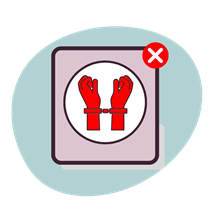02 June 2025: GSC Staff Commission Modern Slavery Training

In response to recent UNODC reports highlighting new and significant risks and threats in the gambling sector, the Gambling Supervision Commission (GSC) staff attended a bespoke training and awareness session on “Modern Slavery and Labour Exploitation on the Isle of Man” by Maria Bridson, an award-winning senior Manx advocate at BridsonHalsall Advocates, with specialist knowledge of the Island’s immigration legislation. Maria has become a prominent voice in the Isle of Man for raising awareness of modern slavery and exploitation.
During the session, Ms Bridson told a series of harrowing true stories of those who had suffered exploitation and human trafficking (HT) at the hands of international organised criminal groups and outlined how this was evolving on the Isle of Man.
Ms Bridson also shared insights into the wider geopolitical picture to contextualise the threat and explain the models of these transnational crime operations to enhance the GSC’s understanding of risk.
Key to the GSC’s ongoing efforts are collaboration and sharing of information both domestically and internationally through data sharing agreements to enhance coordinated multi-agency responsiveness.
The training highlighted the rapidly changing and evolving methods used by bad actors to profit from illicit activity. As a well-regulated jurisdiction, the Isle of Man is a target for this kind of large-scale organised Money Laundering (ML) as the legitimate end destination for proceeds of crime.
As an internationally respected regulator, we must work with domestic and international authorities to understand and combat this threat, and work with businesses and stakeholders to ensure that efforts are aligned, effective and targeted.
The GSC is working collaboratively with agencies, increasing our ability to share information in order to update our understanding of jurisdictional and sectoral risk. These efforts are to be published as part of the Isle of Man’s National Risk Assessment and associated communications, such as the upcoming National Risk Appetite Statement. As well as strengthening entry control processes internally to ensure the GSC upholds a strong regulatory framework.

Recognising the Signs
To many, modern slavery and exploitation can seem like a distant issue, not present in our day-to-day lives here on the Isle of Man. However, typologies highlighted in recent UNODC and IOM FIU reports have indicated that criminal networks are becoming increasingly widespread in Europe, including here on the Isle of Man.
By recognising the trends and threats outlined in reports, we can enhance collaboration, share valuable intelligence, and put effective strategies in place to tackle organised crime worldwide. This collaborative effort is crucial for protecting society and preserving the integrity of both our financial and non-financial systems.
Identifying Modern Slavery
There are various signs to look out for that may indicate HT/Modern Slavery, including:
- Sudden changes in staff numbers or revenue;
- Complex business structures;
- Reluctance to provide Due Diligence / Source of Wealth information;
- Staff have poor English, work long hours or exhibit signs of distress;
- Many staff members are on visas;
- Staff sharing common addresses.
For more information on Modern Slavery and Human Trafficking, the GSC has produced a series of factsheets containing key flags and typologies to look out for.
Collaboration and information sharing
Key to the presentation was inter-agency collaboration and the use of enhanced measures to prevent and target modern slavery on the Isle of Man. With criminal actors rapidly adapting their methods, we all must remain vigilant and responsive to changes in the threat landscape. In response to the growing threat of organised crime, the GSC are implementing targeted measures to safeguard communities and critical sectors. This includes a recent update to information sharing mechanisms through the 2025 Permitted Disclosures Order as well as enhancing our internal systems.
What can you do?
- Spread awareness;
- Educate yourself on Modern Slavery Red Flags;
- Share information with others; and
- Support change.
Collaboration is key
Government agencies continue to enhance information sharing provisions in order to better understand the threat landscape, however, anyone who suspects Modern Slavery to be taking place should inform contact the relevant authorities immediately.
- If it is an emergency, immediately report to the police by dialling 999.
- If you believe the incident is non-urgent, call Isle of Man Police HQ on 01624 631212.
- To pass on information anonymously, call Crimestoppers on 0800 555 111 or fill out their secure, encrypted Anonymous Online Form. You can also anonymously and securely report information via the “STOP” mobile application operated by the charity “Stop the Traffik”.
The GSC takes the threat of transnational organised crime very seriously and is committed to upholding the sector’s integrity and protecting those who may be vulnerable to exploitation. Maintaining a comprehensive understanding of risks and threats is fundamental to these efforts.

